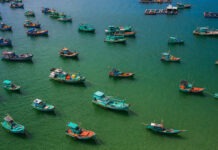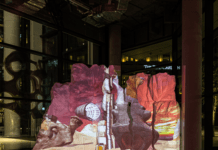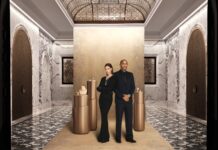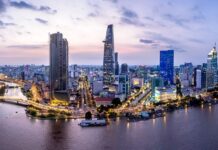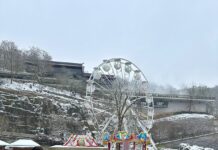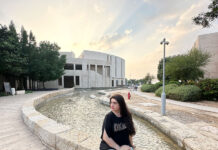Vibrant Brussels is known for being many things at once, and that versatility extends to its attractions. Statues, parks and hills with specific cultural missions, resplendent Art Nouveau and Art Deco villas, and even Europe in miniature – Brussels has it all. Here are some of the best attractions you can visit when in the heart of Europe.

Coudenberg Palace Archaeological Site: One of Brussels’ most unique things to do is explore this active archaeological site, which was rediscovered in the 1980s. Coudenberg Palace has been excavated to reveal the cellars and tunnels of the former Palace of Brussels, as well as forgotten streets that had been buried beneath the city for centuries. The foundations of the medieval palace have been cleared to allow tourists the opportunity to explore, and the museum has free audio guides that take you through the dig site.

Grand Place: Right in the heart of Brussels Old Town, the city’s main plaza (known as Grand Place) is one of the best preserved in Europe. Much of the square’s elegant character is due to the unique architecture of its elegant Gildehuizen (guild houses) with their magnificent gables, pilasters, and balustrades, ornately carved stonework, and rich gold decoration.

Parc du Cinquantenaire: The Parc du Cinquantenaire was established in 1880 to commemorate the country’s 50th anniversary. Its centerpiece is the monumental Palais du Cinquantenaire, the two wings of which, linked in 1905 by a massive triumphal arch designed by the French architect Charles Girault, house two of Brussels’ most interesting museums. The Royal Art and History Museum is home to one of the most extensive tapestry collections in the world, and the Belgian Army Museum and Museum of Military History provides an overview of the development of military technology and of the major campaigns fought on Belgian soil.

Belgian Comic Strip Center: This gorgeous 1906 building, designed by Victor Horta, is home to the wonderful Comic Strip Center, devoted to the history of cartoons and comic strips in the country that gave the world The Smurfs and Tintin. A constantly rotating exhibition of 200 original comic strip drawings by Belgian and French comic artists is shown here. In addition, the museum documents the rise in popularity of Belgian and French comic strips through a cleverly curated collection of original manuscripts, draft sketches, and imaginatively reconstructed sets.

Place Royale: This is one of the most notable historical sites in Brussels and is central to discovering the city’s history. Immerse yourself in local history as you walk through the powerful square. Pastel tones adorn the buildings that surround Place Royale, and the neoclassical architecture echoes the squares of Vienna or Venice. Among the buildings is St. Jacques-sur-Coudenberg, an 18h-century church fitted with an ornate bell tower. Enter the church to experience its breathtaking decor and to escape the noise of the square outside. At the center of the square you will find a statue of Godfrey of Bouillon, the first ruler of the Kingdom of Jerusalem. He rides the back of a bucking horse, making his presence felt throughout Place Royale over 900 years after his death.

Château Royal: Although the Château Royal, home of the Belgian Royal Family, is not itself open to the public, the park surrounding it at Laeken is. There are delightful footpaths and a number of attractions worth seeing, such as the monument to Leopold I at the center of the circular flowerbed in front of the palace. The Japanese Tower, in the northernmost corner of the park, was originally built for the Paris Exhibition of 1900. The hothouses, erected in Leopold II’s time, are the highlight of the gardens and are open to the public during April and May when many of the plants are in flower.

Basilique Nationale du Sacré Coeur: The Koekelberg district is dominated by the massive Basilique Nationale du Sacré Coeur, the fifth largest church in the world. It displays something of a mixture of styles, impressing nevertheless by its sheer size. Inside is an excellent collection of art and an ongoing exhibition on the history of the basilica. There is also a picture of Christ giving his blessing, which hangs above the altar. From the cupola is a breathtaking view of the city and across the countryside to Antwerp.

Saint-Michel Cathedral: Dedicated to St. Michael and St. Gudula (the patron saints of Brussels) this Gothic church was first founded in 1225 but only completed in the 15th century. The facade is impressive, rising majestically above a broad flight of steps and crowned with twin 69-meter-high towers designed by Jan van Ruysbroeck. The beautifully proportioned interior is lavishly furnished and is home to some outstanding stained glass windows.

Notre-Dame du Sablon: The 15th- to 16th-century church of Notre-Dame du Sablon, generally considered one of the loveliest Late Gothic churches in Belgium, was built as a replacement for a small chapel first erected on the sandy expanse of the Sablon by the Crossbowmen’s Guild in 1304. The interior of the church is breathtaking, in particular because of its marvelous stained glass.

Belgian Royal Museum of Fine Arts: Belgium’s Royal Museum of Fine Arts is one of the largest and best art galleries in the world. The museum grew out of a collection first set up in 1797 and was originally housed in the former palace of Charles of Lorraine. This was transferred to the newly established Musées Royaux in 1846. The collection is divided into two parts: the Musée d’art ancien (Museum of Ancient Art) with a famous collection of Flemish and Dutch Old Masters, and the Musée d’art moderne (Museum of Modern Art), which has a range of mainly 19th- and 20th-century Belgian works.

Atomium: Along with Manneken Pis, the Atomium is Brussels’ best-known landmark attraction, and although it is a bit of a journey by tram to get out here, the bizarre 102-meter-high steel and aluminum structure, designed by the architect André Waterkeyn for the 1958 Brussels World Exhibition, is the city’s most surreal sight. The building represents a molecule of iron magnified 165 million times, and visitors may enter the interior where four of the nine spheres are now used for the presentation of a show about human life called Biogenium.








